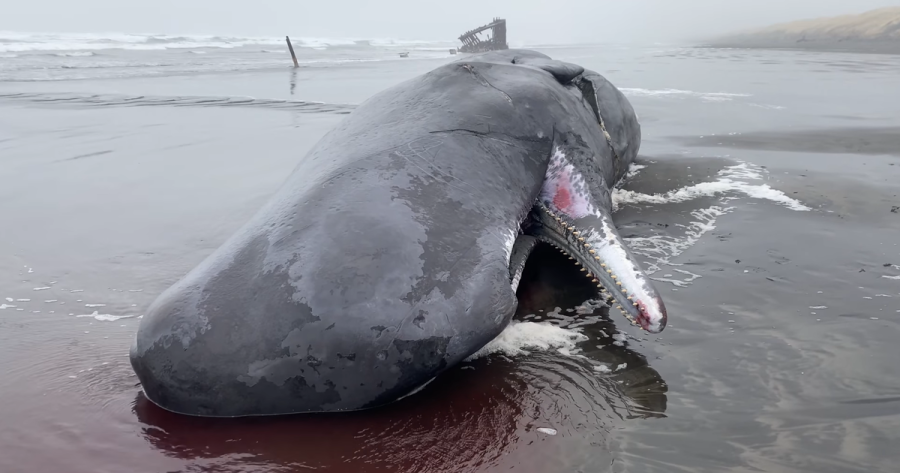For the Love of Whales
A 40,000 pound juvinile sperm whale washed up near Fort Stevens.
February 14, 2023
Last month, four dead whales washed up on Oregon beaches in the span of less than two weeks. These whales would likely have been lost to the sea if it wasn’t for the King Tides, strong currents that occur when the Moon is closest to Earth. The King Tides pulled the carcasses out from the ocean and up onto the beaches.
The first to wash up, a Gray Whale, was discovered on January 11th in Winchester Bay. Based on the whale’s wounds, experts determined it had been killed by Orcas. The second was a juvenile Sperm Whale on January 14th. It washed up just south of the wreck of the Peter Iredale near Fort Stevens and the whale had a large gash on its side from a ship’s propeller, which, following a necropsy, an animal autopsy, was confirmed to have been the cause of death.
Sperm Whales washing up on beaches is rare, since they spend most of their time deep underwater. Only 11 Sperm Whales have washed up in Oregon in the last 13 years, compared to 13 Gray Whales in the last 3 years alone.
Four days later on January 18th, a Gray Whale calf 12 feet in length washed up a mere 100 yards from the Sperm Whale, according to experts, it likely starved. Finally on January 21st, another Gray Whale was discovered on Crescent Beach, the cause of death remains unknown, although there were some signs of starvation. The whale also had a large shark bite, but this was determined to have occurred after the whale’s death.
Gray Whales, which make up the majority of whales in Oregon’s waters, are currently in the process of completing their annual migration from their arctic feeding grounds to warmer southern waters. Unfortunately, Gray Whales are currently experiencing an “Unusual Mortality Event” according to the National Oceanic and Atmospheric Administration. The NOAA has reported a 38% decline in the Gray Whale population since 2016. A similar event occurred in 1999 and reduced the population by a similar amount.
All of the whale carcasses will be left on the beach to naturally decompose and provide food for local seabirds, with the exception of the Gray Whale calf which was pulled back into the sea a few days after washing up. Understandably, the NOAA doesn’t want a repeat of the events in 1970, when the Oregon Highway Division attempted to ‘remove’ a whale carcass using nearly 1000 pounds of dynamite. The operation was a massive failure, most of the carcass survived the explosion, and pieces of whale rained down on the surrounding area like artillery, crushing cars and spreading the smell of burning whale blubber all around the beach.






